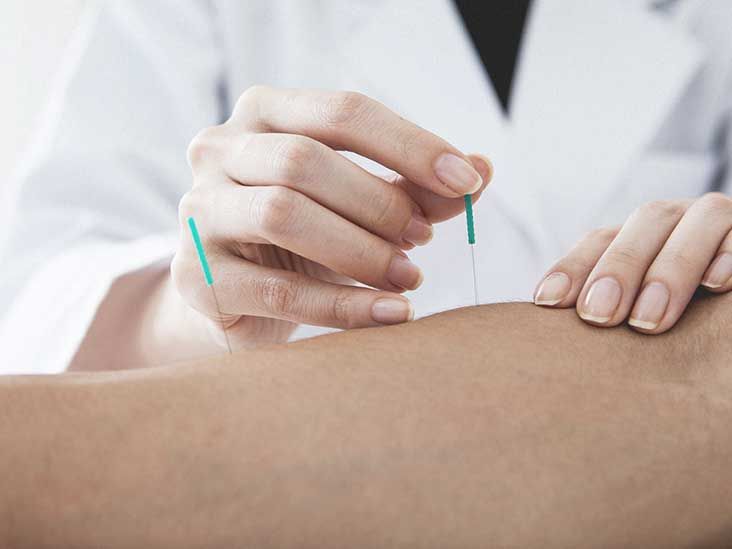Medically reviewed by Debra Rose Wilson, Ph.D., MSN, R.N., IBCLC, AHN-BC, CHT —Written by Kimberly Holland
December 6, 2018
Is dry needling the same thing as acupuncture?
If you only compared dry needling and acupuncture with a photo, you might be stumped to identify each. Both acupuncture and dry needling use thin, stainless steel needles. For both practices, needles are inserted into the skin and both also claim to treat pain.
That’s where the similarities end. Unique qualities help differentiate the two. One practice has been used for thousands of years as an alternative treatment and has some solid research of effectiveness. The other’s been adopted in the last couple of decades.
One is designed to relieve pain, discomfort, or issues by opening up a person’s energy flow or chi. The other is designed to stimulate trigger points, or muscles that are irritable.
Knowing the differences can help you decide which type of treatment is right for you.
What is dry needling?
Dry needling is a modern treatment designed to ease muscular pain. Its popularity is growing.
During dry needling, a practitioner inserts several filiform needles into your skin. Filiform needles are fine, short, stainless steel needles that don’t inject fluid into the body. That’s why the term “dry” is used.
Practitioners place the needles in “trigger points” in your muscle or tissue. Dry needling is also sometimes called intramuscular stimulation. The points are areas of knotted or hard muscle.
Dry needling practitioners say the needle helps release the knot and relieve any muscle pain or spasms. The needles will remain in your skin for a short period of time. The length of time depends on the practitioner. Some healthcare professionals, such as physical therapists and massage therapists, receive some training in dry needling.
In-and-out techniques
Some forms of dry needling use techniques called pistoning or sparrow pecking. Both of these techniques rely on in-and-out needle insertion. In other words, the needles don’t stay inserted in the skin for long. The needles prick the trigger points and are then removed. More research is needed to support this method of dry needling.
Non-trigger point technique
Some dry needling techniques treat a broader landscape of the central nervous system. This is called non-trigger point treatment. Instead of inserting needles only in the area of pain, the practitioner may instead insert needles in areas around the point of pain instead of directly on it.
This technique relies on the idea that pain is the result of a greater nerve or muscular issue, not just focused in the main area of pain.
Dry needling in practice
Dry needling is most often performed by physical and sports injury therapists. Currently, dry needling practitioners don’t need extensive training. No regulatory agency controls training, licensure, or supervision for this procedure.
Because there’s no credentialing board, there’s also no way to determine if someone’s training is legitimate and satisfactory. If you choose dry needling, find someone with postgraduate healthcare education, such as a physical therapist.










